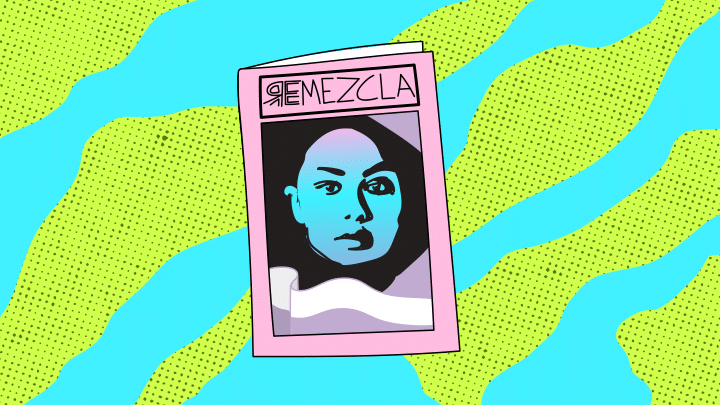The art scene in Phoenix is mostly dominated by men, güeyes that went to school together, partied together and support each other’s work. So one day, I asked one, “Who’s this person doing wheatpastings of tortilleras, mothers and others in downtown?” The response was “La Muñeca,” one of the few female street artists in Phoenix.
La Muñeca is from everywhere and nowhere. She grew up in the East Coast in a community of mostly white hippies. “I was not exposed at all to the culture,” she says, “I was a güera.” Years later, life took her to live in San Ysidro, California, and to Nogales Arizona, where she started learning more about the realities of border towns while living with her nana y tata.
Almost 80% of undocumented immigrants crossing to the United States by foot, stop by Nogales before starting their trip. “We would see migrants crossing through our backyard, but it was just normal for us.” Little by little, the US-Mexico border became militarized, with thousands of agents, checkpoints and helicopters flying around. This change was what created La Muñeca, what got her interested in really doing something with her art.
Early on, La Muñeca saw a video about wheatpasting, how it was done, and how it was use around the world as a way to communicate ideas and beauty. “I took a picture of a friend and pasted it on Central, by an electrical box.” The piece remained for almost nine months. People took pictures of it and posted them on their blogs. It encouraged her to keep it up.
For the last four years, La Muñeca has focused on pasting pictures that show indigenous women with children, doing housework, tending to their family, getting ready for battle. The images can be seen along downtown Phoenix’s Roosevelt Row, the Garfield neighborhood and along the Calle 16 corridor.
La Muñeca’s work has become quite popular in Phoenix, and her success has exposed her to doing work in Chiapas and Mexico City. She is now collaborating with other street artists such as Yescka from Oaxaca, who will be co-curating a show with La Muñeca at The Lab in March, 2014.
According to La Muñeca, many street artists in The Valley are harassed by Phoenix PD when working on street projects, and this made her think about taking a brief break from the walls. “They were asking too many questions, so I decided to work elsewhere for a little bit”.
But La Muñeca is not a quitter, and she says she is getting ready to hit the streets again with a new series of images related to the mass incarceration of people of color in Arizona.
In the last year she’s toured the Arizona-Mexico border and pasted images of Jose Antonio, a kid shot eleven times by border patrol while playing with friends in the Nogales border. She also pasted the famous picture of Briseña Flores, a young immigrant killed by a minuteman in southern Arizona. Their faces now living in walls, reminding southern Arizona residents to not forget them.
In the last few years, street art has become a “semi-accepted” form in the Roosevelt Row area, where murals pop-up all the time, and we can see Breeze, El Mac, Tato Caraveo and others show their talent. But the reality is that the walls are not as colorful in other parts of the city, not in the south side, where a huge Latino population resides, and not in the West, where new immigrant families are changing the landscape.
Her intention isn’t to be shown in museums or galleries, she believes that her work will have a bigger impact when seen in the streets, by the people. “One of my goals is to do more artwork in the barrios, so a little kid walking back home can see it, plant a seed and get him to do something.”
La Muñeca is a young artist showing that women are a central part of her work, but also showing that women are a central part of the work artists will do in Arizona. Her images have people talking around town; she’s new to the scene and has many more years to express herself with pasting, something that is becoming more popular in La Phoeniquera, and that La Muñeca will be able to say she helped pioneer.




